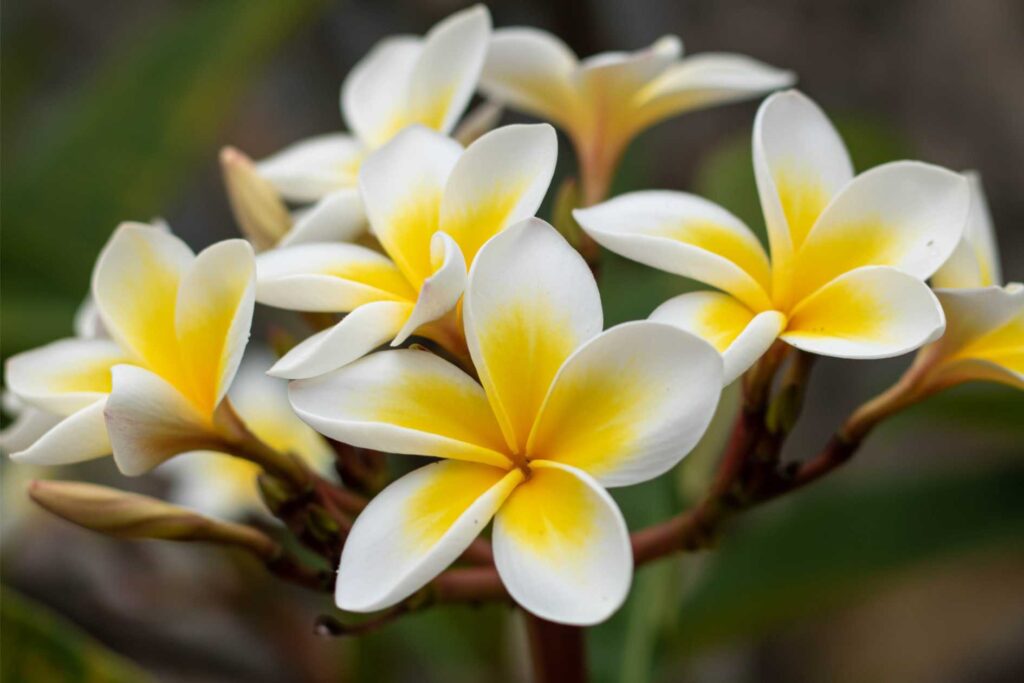In the realm of floral beauty, few blossoms evoke the same sense of tropical elegance and intoxicating fragrance as the Frangipani, also known as Plumeria. With its delicate, waxy petals and mesmerizing scent, the Frangipani flower holds a special place in the hearts of many, not only for its aesthetic appeal but also for its rich cultural significance.
Originating from the tropical regions of Central America, the Caribbean, and Southeast Asia, the Frangipani flower boasts a vibrant history intertwined with various cultures and traditions. Revered for centuries for its beauty and symbolism, this enchanting bloom has found its way into folklore, religious ceremonies, and artistic expressions around the world.
One of the most striking features of the Frangipani flower is its exquisite appearance. Available in a spectrum of colors ranging from pristine white to vibrant shades of pink, yellow, and red, each blossom is a testament to nature’s artistry. The petals, often arranged in overlapping layers, form a captivating star-like shape that instantly draws the eye.
However, it is the intoxicating fragrance of the Frangipani flower that truly sets it apart. With its sweet, floral scent tinged with hints of citrus and spice, the aroma of Frangipani is unmistakable and unforgettable. In many cultures, the fragrance of these flowers is believed to have calming and therapeutic properties, making them a popular choice for aromatherapy and perfumery.
Beyond their aesthetic and olfactory allure, Frangipani flowers hold deep cultural significance in many societies. In Hindu mythology, the Frangipani tree is associated with the divine and is often planted near temples and sacred sites. In Hawaiian culture, the flower is commonly used in leis, symbolizing love, friendship, and hospitality. Similarly, in Thai tradition, Frangipani flowers are often given as offerings in religious ceremonies and are associated with purity and devotion.
Moreover, the Frangipani flower has inspired artists, poets, and storytellers for generations. Its timeless beauty and symbolic resonance have been immortalized in paintings, literature, and music, serving as a muse for creative expression across cultures and continents.
Despite its widespread popularity and cultural significance, the Frangipani flower remains a cherished treasure of the tropics, enchanting all who encounter its delicate blooms and intoxicating fragrance. Whether adorning a tropical landscape, gracing a ceremonial lei, or simply brightening a garden with its presence, the Frangipani continues to captivate hearts and minds, reminding us of the enduring power of nature’s beauty.

